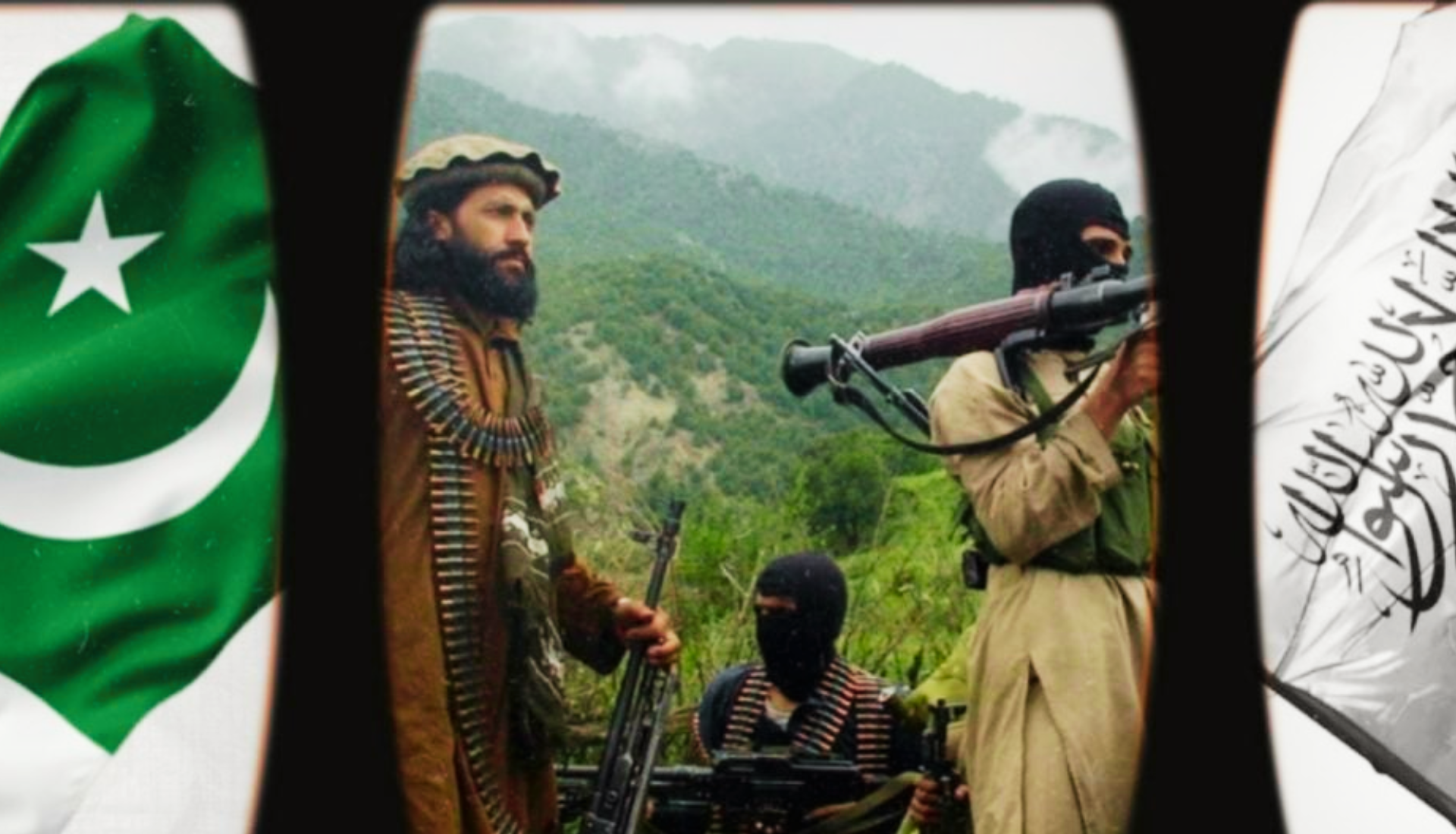It was the morning of 16 December 2014, six terrorists infiltrated Army Public School, in the city of Peshawar, mercilessly martyring hundreds of children. On 8 May 2021, a bomb blast took away the precious lives of almost 80 girls outside a school in Dasht-e-Barchi, Kabul city. A year and a half later, 19 bright and aspiring teenagers were martyred while attempting their entrance exams in the same Dasht-e-Barchi locality. Innocent children in Pakistan and Afghanistan have repeatedly become a target of these notorious terrorists.
Terrorist organizations have remained a threat to the South Asian security matrix for decades now.
The Tehreek-e-Taliban Pakistan (TTP) and Islamic State – Khorasan Province (IS-KP) have committed heinous attacks, even against children, in Pakistan and Afghanistan. The genesis of these groups is usually traced to Al-Qaeda. However, all three groups share a common origin but are radically different in their guiding principles and ideologue.
Birth of Al Qaeda
On 6 October 1981, a military parade, to commemorate the Yom Kippur War, was taking place in Cairo, Egypt. Two years ago, President Anwar Sadat had signed David Accords as a peace deal with Israel that had aggravated a strong opposition. The Egyptian air force was doing an air show while the army was parading in trucks carrying artillery. Suddenly a truck stopped in front of the President’s stage. Armed men came out and opened fire on Egyptian and foreign leaders.
Egyptian Islamic Jihad (EIJ) had assassinated President Anwar Sadat and emerged as the face of terror in Egypt.
The Egyptian government arrested and executed many members of EIJ thereafter. One of them was Ayman Al Zawahiri, the one who would rise to be the future chief of Al Qaeda. Al Zawahiri took his inspiration from Sayyid Qutb, an Egyptian scholar, whose book Ma’amlim fil Tariq (Milestones) highlighted the concepts of Khawarij and Takfir. This book became the basis for the emergence of Egyptian Islamic Jihad in the 1970s with Ayman Al Zawahiri as one of its leaders. During his time in jail, he learned about the ongoing Jihad in Afghanistan against the Soviet invasion and decided to join other Arabs once he got out of jail.
Concurrently, a young and rich Saudi citizen, Osama Bin Laden, came to Afghanistan to financially support his teacher, Abdullah Yousuf Azzam, in the same Jihad. For this, he established Bayt-ul-Ansaar and started recording names of Arabs fighting in Afghanistan, in a register called Al-Qaeda. When Al Zawahiri came to Pakistan, he met young Bin Laden and saw his financial potential for a global Jihad. At this time, Al Zawahiri, inspired by Qutb’s ideology, started mentoring Bin Laden.
After Soviet forces withdrew from Afghanistan, Bin Laden moved to Sudan. Many reports emerged of EIJ operating from Sudan suggesting that Al Zawahiri also moved to Sudan during that same time. These were exactly the years when the US forces faced many attacks in Somalia and Saudi Arabia. The Egyptian Islamic Jihad also targeted the Egyptian embassy in Islamabad, Pakistan in 1995. When the Sudanese government banned Bin Laden, he moved back to Afghanistan in 1996.
Meanwhile, Al Zawahiri lost his footing in Egypt after the most brutal killings in the Temple of Hatshepsut where they killed 71 tourists. He joined Osama Bin Laden in Afghanistan in 1997. A year later, Osama Bin Laden and Al Zawahiri announced the formation of the ‘World Islamic Front Against Crusaders and Jews’, the embryonic Al Qaeda. The simultaneous bombings of US embassies in Nairobi and Kenya followed this announcement.
Al Zawahiri merged his Islamic Jihad with World Islamic Front in June 2001 under a new name, Jama’at Qa’idat al Jihad.
This same organization called “Al-Qaeda” terrorized the world in general and the South Asian Region in particular for years to come; inflicting irreplaceable losses.
TTP – Al Qaeda Strategic Backyard in Pakistan
On 11 September 2001, five planes were hijacked in the United States of America. Two of them struck the twin towers of the World Trade Center, killing almost three thousand civilians. As horrific as this incident was, it gave way to an equally deadly twenty years of a nearly fruitless and unwinnable war; what we now know as Operation Enduring Freedom. The active battleground was none but Afghanistan.
Many Al Qaeda members and its affiliates ran to Pakistan, the immediate neighbor, to seek shelter and settled themselves mostly in the South and North Waziristan regions.
This entailed the radicalization of the local tribes in the Waziristan mountains. Pakistan Armed Forces planned and executed operations to catch them. Amidst this taking refuge and escaping the reach of the armed forces, Nek Mohammad, a native Pakistani, saved the life of Tahir Yuldashev, leader of the Islamic Movement of Uzbekistan (IMU), a close affiliate of Al Qaeda. From here emerged a bond in which he started training Nek Muhammad and inspired the modus operandi of the future Tehreek e Taliban Pakistan (TTP).
While Al Qaeda strengthened its hold in South Waziristan, its nearby regions became a challenge for them. Al Qaeda sent Sheikh Essa, its alleged third-in-command, to radicalize tribes in the North Waziristan region of Pakistan. When Nek Muhammad died, Baitullah Mehsud and Hakimullah Mehsud from North Waziristan emerged as the new leaders.
In 2006, Tahir Yuldashev issued a Fatwa against the Pakistani Army and made a call to prioritize Jihad against Pakistan over the West.
This Fatwa inspired Abdul Aziz of Lal Masjid who made Lal Masjid a hub of terror in the center of Pakistan’s federal capital, Islamabad. When the government conducted an operation against the siege of Lal Masjid and found alleged letters from Al Zawahiri, Baitullah Mehsud and his affiliates called for war against Pakistan’s government. In 2007, these terrorists branded themselves under the umbrella of Tehreek-e-Taliban Pakistan with Baitullah Mehsud as their leader and a reign of terror began in Pakistan for the next seven years.
In 2013, the then-leader of TTP, Hakimullah Mehsud, was killed. A rift started between different leaders over the leadership assuming the command. When TTP elected Mullah Fazlullah as its leader, splinter groups of TTP appeared. Among those, Tehreek-e-Khilafat Pakistan (TKP), under the leadership of Hafiz Saeed Khan, and TTP-Jamaat-ul-Ahrar (JuA), under Omar Khorasani, emerged as the most notorious groups.
While TTP-JuA rejoined the TTP umbrella, TKP went on to become the biggest and the most recent threat to this region in the form of IS-KP.
Emergence of IS-KP
While TTP was gaining strength in Pakistan, Abu Musab Al Zarqawi’s Jama’at al-Tawhid wal-Jihad started its operations in Iraq. Al Zarqawi, a Jordanian who fought against the Soviets, had founded his organization in Herat, Afghanistan with alleged assistance from Osama Bin Laden in 1999. In December 2004, he officially allied his group with Al Qaeda and renamed his group Al Qaeda in the Land of the Two Rivers or commonly known as Al Qaeda in Iraq.
Al Qaeda, later, removed him as its leader in Iraq after he started to proclaim himself Caliph and started to kill Shiites. After he was killed in 2006, his successor joined the umbrella of the Islamic State in Iraq (ISI) under the leadership of Abu Omar Al Baghdadi. In 2013, ISI joined the Al Nusra Front of Syria and rebranded itself as Islamic State in Iraq and Syria (ISIS). A year later, it announced the formation of an Islamic Caliphate and declared war against the whole world.
After the announcement of establishing an Islamic State, TTP’s splinter, TKP, pledged its allegiance to ISIS.
To pursue its dream of a global and transnational organization, ISIS appointed Hafiz Saeed Khan the leader of its Khorasan province chapter. This was the birth of the coming havoc in Afghanistan; the deadly offspring of ISIS that never shied away from targeting school children and places of worship.
Islamic Caliphate and Divergence of Beliefs
The guiding principle behind Al Qaeda and TTP is their belief in serving the Islamic Caliphate as its soldiers. They believe that an Islamic caliphate will emerge in the near future with these two organizations joining it as its army. On the other hand, ISIS sees itself as a caliphate and asks other terrorist organizations to serve its purpose. Similarly, Al Qaeda considers the USA and its allies as its enemy while TTP believes its main target is Pakistan and its army. In a nutshell, though TTP and IS-KP are direct or indirect offshoots of Al Qaeda, there are some points where these organizations diverge from each other. However, all these organizations pose the same threat to the security of this region.

![Al-Qaeda, TTP, ISKP in Pakistan's backyard: Pakistani troops observe the area from a hilltop post in Khyber district [File: Anjum Naveed/AP]](https://southasiatimes.org/wp-content/uploads/2022/10/AP21312682025351-1.webp)





